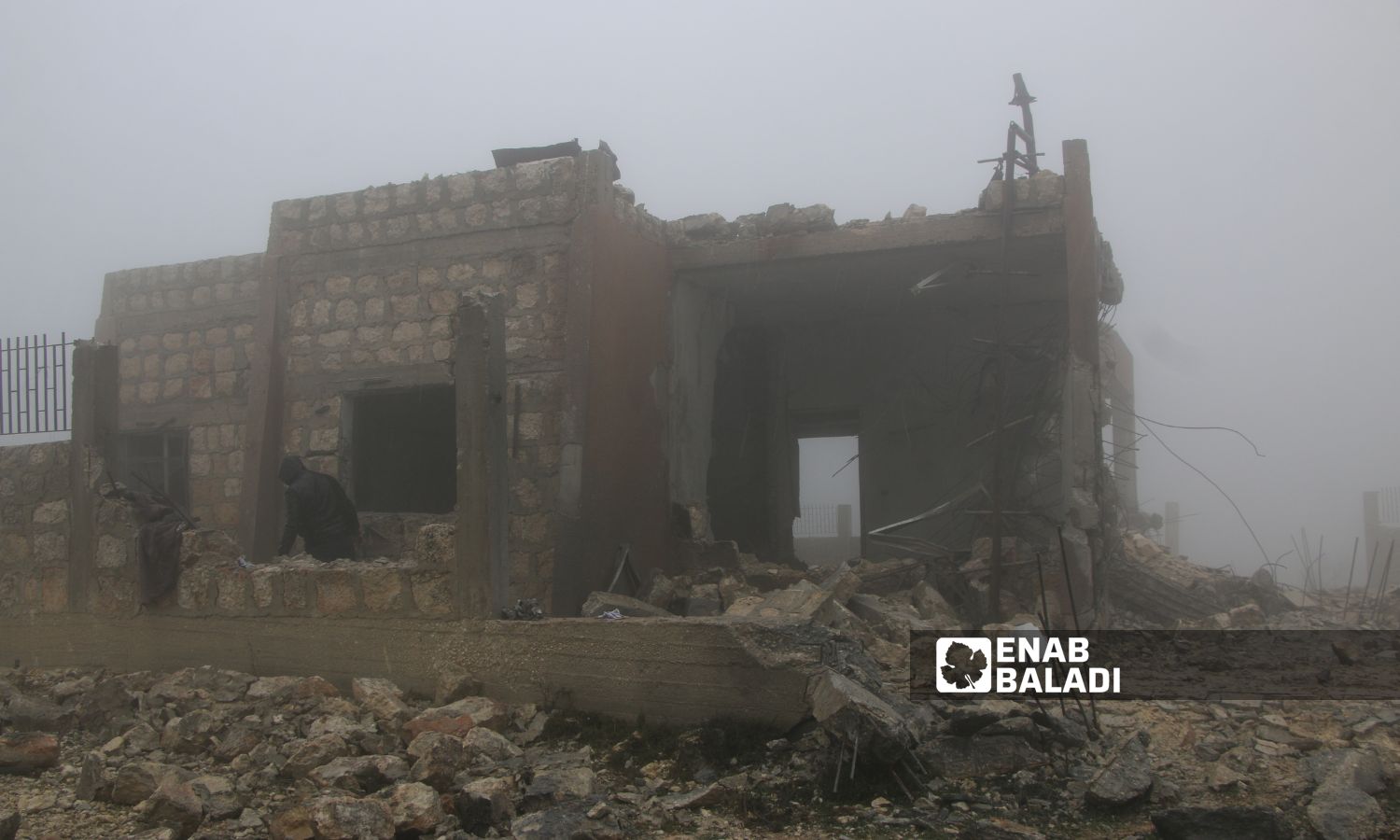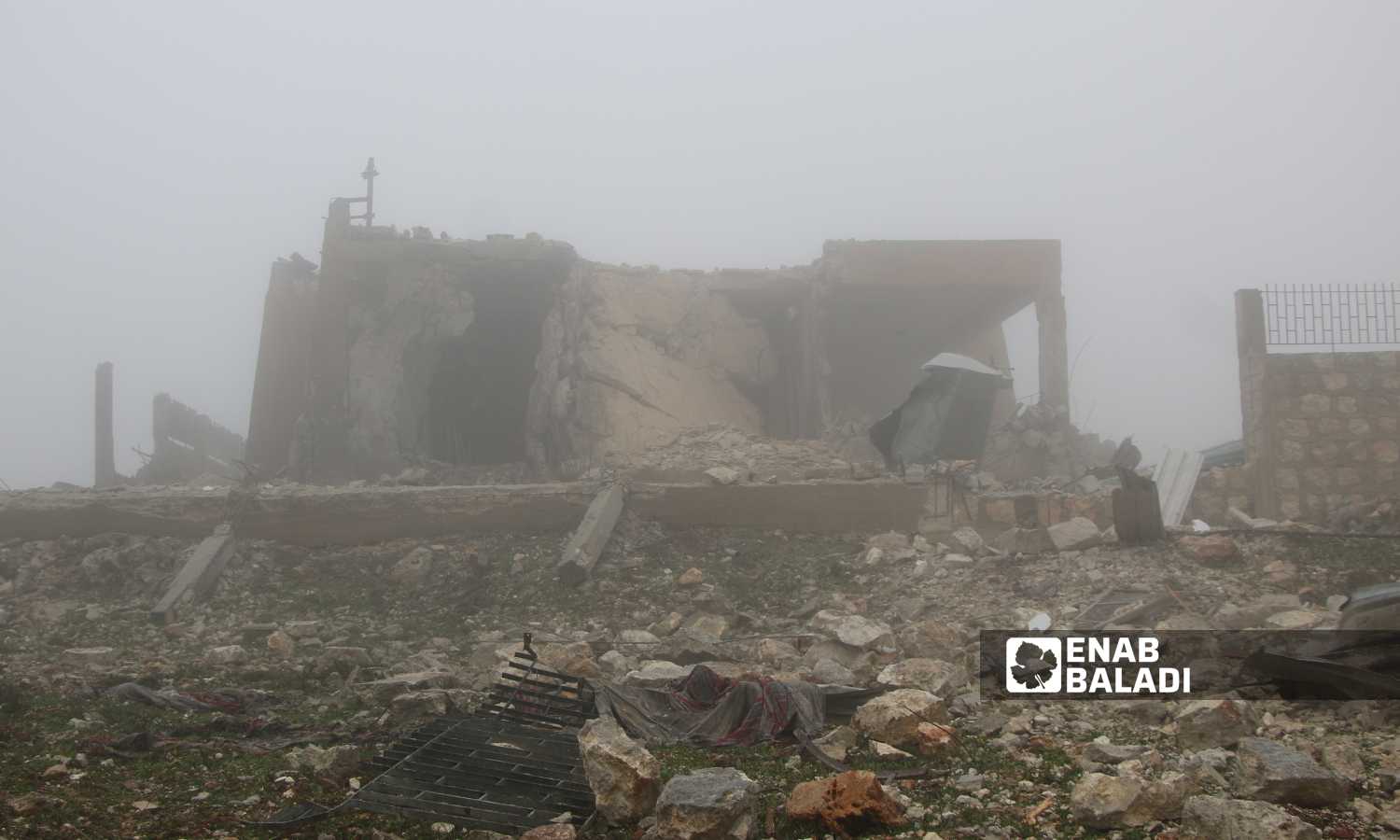



On the evening of Monday, January 15, Iran targeted sites in Syria and Iraq with 24 ballistic missiles from southern and western Iran, with a range exceeding 1,200 kilometers.
The Iranian Islamic Revolutionary Guard Corps (IRGC) announced that it launched four “Khaibar Shekan” (Khaibar Breaker) missiles towards what it described as an “Islamic State organization headquarters” in Idlib.
It added that it targeted with nine missiles locations of “other terrorist groups” in areas outside the control of the Syrian regime, and with 11 missiles what it described as a “Mossad espionage headquarters” in the Kurdistan Region of Iraq.
The official Iranian announcement of operations in Syria is a rare occurrence, and the Syrian regime has not commented on the targeting that occurred on Syrian soil up to the moment of the publishing of this report.
From the strikes on Syrian soil, those targeting northern Idlib are known, while the locations of the strikes that the Revolutionary Guard talked about as in other areas outside the control of the Syrian regime are unknown.
A correspondent for Enab Baladi in Idlib reported that three missiles fell in the village of Taltita in the northern countryside of Idlib, resulting in the destruction of a building formerly used as a medical point.
The Syria Civil Defense (the White Helmets) said that the targeted building was a clinic that had been out of service in Taltita village, and no casualties were recorded within it, while the building itself suffered extensive damage exceeding 60%, and it is a single-story building.
According to the Civil Defense, initial inspection by its teams indicates that three munitions fell on and near the building, two of which hit the building, one from the roof and another from the eastern side of the building, while the third munition fell near the building on the southwestern side.
According to information obtained by Enab Baladi from local sources, the targeted building had been vacant for about six years and was previously a medical point that ceased to operate, then was taken over by al-Nusra Front (currently Hayat Tahrir al-Sham), followed by the Turkistan Islamic Party which later left it.

A medical point was targeted by Iranian ballistic missiles in northwestern Syria – January 15, 2024 (Enab Baladi/Iyad Abdul Jawad)
The Revolutionary Guard Corps issued statements carried by Iranian media, stating in one that the targeting was in response to “the recent terrorist crimes committed by the enemies of Islamic Iran, as espionage headquarters and gatherings for anti-Iran terrorist groups in parts of the region were targeted and destroyed with ballistic missiles at midnight.”
It added that the attack in Syria was in response to an Islamic State attack in Iran that is based in the “occupied lands” of Syria and that Iranian offensive operations will continue until “avenging the last drop of the martyrs’ blood,” according to the statement.
Earlier in January, the Islamic State group claimed responsibility for two explosions in the city of Kerman in southeastern Iran, which killed nearly 100 people and injured dozens, at a memorial for the former commander of the Quds Force, Qasem Soleimani.

Remains of Iranian missiles fired at northwest Syria – January 15, 2024 (Enab Baladi/Iyad Abdul Jawad)
The Iranian targeting comes at a time when the region is witnessing Iranian-American tensions amidst Israeli escalation in the Gaza Strip, with US bases being targeted almost daily in Syria and Iraq, and other attacks on American ships in the Red Sea, with Tehran being accused of responsibility.
A week earlier, the Pentagon’s press secretary, Major General Pat Ryder, said that US and coalition forces had been attacked at least 130 times in Iraq and Syria, including 77 attacks on US bases in Syria, from October 17, 2023, to January 11.
Siba Abdul Latif, a research assistant at the Omran Center for Strategic Studies, told Enab Baladi that Iran justified the strikes with the existence of Israeli intelligence cells in Erbil, and this is what Iran considers a clear security threat if its claims are true.
Abdul Latif believes that the recent Iranian strikes on Syria and Iraq are part of the series of responses to attacks and targeting by the US and Israel on military sites of Iranian militias in Syria, Iraq, and Lebanon, the most significant being the targeting and killing of the Revolutionary Guard senior advisor Sayyed Razi Mousavi, who is considered one of the most important Iranian leaders.
On December 25, 2023, an Israeli plane bombed a house in the town of Sayyida Zeinab in Rif Dimashq province, resulting in the death of one of the oldest Revolutionary Guard advisors in Syria, Sayyed Razi Mousavi.
Since the killing of the Iranian advisor, Tehran’s threats have not ceased, as Iran’s ambassador and permanent representative to the United Nations, Amir Saied Iravani, said that Iran retains its “legitimate and inherent” right based on international law and the United Nations Charter to respond at the appropriate time it deems necessary, according to what was reported by the Iranian news agency IRNA.
Abdul Latif believes that Iran is starting another narrative of revenge in addition to the killing of Qasem Soleimani, which Tehran claims it continues on this path in an attempt to control its militias that are under attack.
However, the warfare between these parties has always been distant from direct confrontation, so the conflict takes place away from the borders of Iraq and Syria but targets security points that enhance Iran’s presence in the region.
These strikes carry several Iranian messages, the first being that it is still present in the region and is one of the effective powers, and secondly, the strikes are a promotional campaign for Iran in front of its militias, trying to control them by responding to targeting Israeli and American points, in addition to conveying a message to the Kurdistan region to deter it from cooperating with Israel and the US against it.
Iran has repeatedly denied responsibility for the attacks on US bases, while the US continues to hold it responsible for the same attacks. Previously, the Iranian Foreign Minister, Hassan Amir Abdollahian, denied his country’s responsibility for any targeting of US bases.
On December 6, 2023, the spokesman for the Iranian Foreign Ministry, Nasser Kanaani, stated that the US military presence in the West Asia region “never brought security,” and Kanaani reiterated the denial of the existence of forces proxy-fighting for Iran in the region.
He mentioned that “the resistance factions in the region are completely independent and act according to what they see as appropriate regarding the security of their countries or support for the oppressed Palestinian people.”
if you think the article contain wrong information or you have additional details Send Correction